
Monterey Pine Pinus radiata
Although the Monterey Pine occurs naturally in the very northern end of the Santa Lucia Mountains it is one of the most planted and frequently seen trees along Highway 1 on the Big Sur Coast. A central coast of California native its distribution is restricted to small locales in three counties of the Central Coast: San Luis Obispo, Monterey and Santa Cruz. Varieties of the Monterey Pine occur on two islands off the Baja coast of Mexico.
Monterey Pines are a fast growing tree that typically reaches height of 50 to 120 feet. Needles are in bunches of three 4 to 6 inches long. The female cones are asymmetrically egg-shaped, and will often stay attached to the limb.
Monterey Pine are the mosy planted conifer in the world. This fast growing relatively short lived tree is found in plantations in New Zealand, Australia, Chile, and other similar climates around the world where it is most commonly known as Radiata pine. I have counted rings on a 40 year old tree that had numerous 1 inch annual growth rings and watched young pines add 6 to 8 feet of height each year. Monterey Pines are closely related both the Knobcone Pine and the Bishop Pine. Pine pitch canker has killed and stressed numerous trees along the coast.
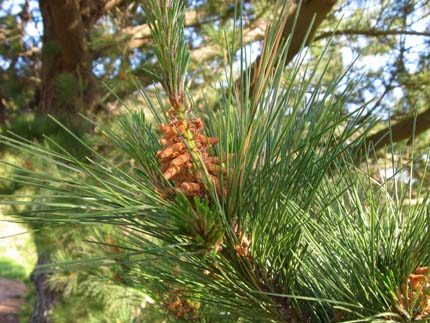 Needles and male pollen cones of the Montery Pine. Needles are in clusters of three 4 to 6 inches when mature. Male pollen cone are about 1/2 inch long. The needles can "harvest" coastal fog and drip in the ground beneath the tree adding up to 1/2 inch of moisture in a week.
Needles and male pollen cones of the Montery Pine. Needles are in clusters of three 4 to 6 inches when mature. Male pollen cone are about 1/2 inch long. The needles can "harvest" coastal fog and drip in the ground beneath the tree adding up to 1/2 inch of moisture in a week.
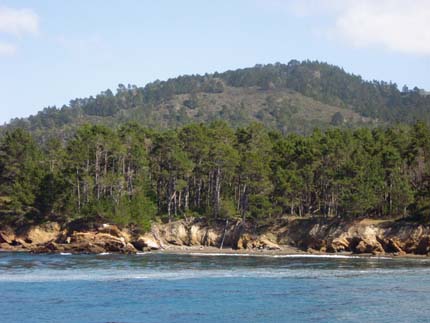 From mountains to the sea. Monterey Pines at the northern end of the Santa Lucia Mountains can go from sea leve up to 1000 ft.
From mountains to the sea. Monterey Pines at the northern end of the Santa Lucia Mountains can go from sea leve up to 1000 ft.
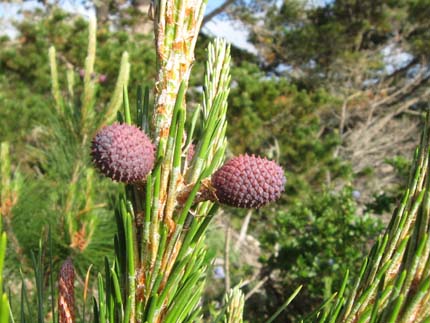 Young female cones and spikes of new spring needles and branches.
Young female cones and spikes of new spring needles and branches.
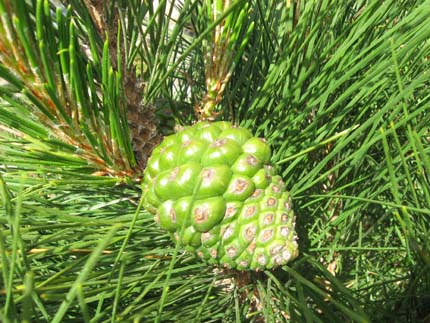 Green female cones
Green female cones
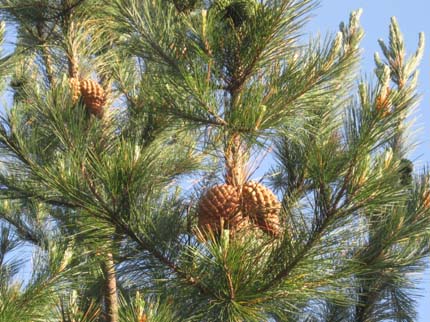 Female cones will remain closed for many years on the branch. On a hot summer day the sound of popping cones can be heard as the mature cones release their seeds. Cones often grow in whorls around the truck and larger branches.
Female cones will remain closed for many years on the branch. On a hot summer day the sound of popping cones can be heard as the mature cones release their seeds. Cones often grow in whorls around the truck and larger branches.
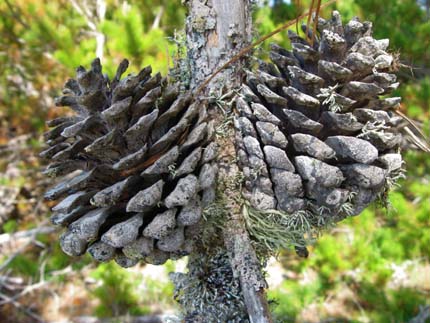
Old cones will often remain on the branch. Many cones need fire to release the seeds held within the cone.
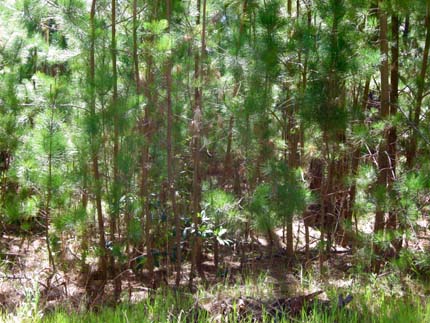 Thickets of young seedling just two years after a fire.
Thickets of young seedling just two years after a fire.